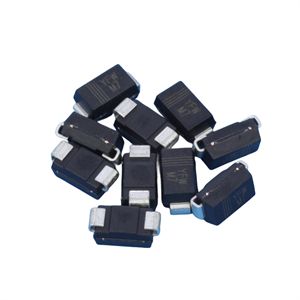Date:2024-09-25 Categories:Product knowledge Hits:473 From: Guangdong Youfeng Microelectronics Co., Ltd(YFW)
What is the working principle of a transistor? What important role does it play in it?
A transistor, also known as a bipolar transistor or crystal transistor, is a semiconductor device that controls current by amplifying weak signals into larger amplitude electrical signals. It is also used as a contactless switch. The common transistors are 9012, 8550, 9013, and 8050. The main function of the transistor in microcontroller application circuits is to act as a switch. 9012 and 8550 are PNP type transistors that can be used interchangeably. 9013 and 8050 are NPN type transistors that can be used interchangeably. There are two types of transistor structures, NPN and PNP, because electrons have a higher mobility than holes, NPN transistors are more widely used than PNP transistors.
How to distinguish between NPN and PNP
① NPN uses B → E current (IB) to control C → E current (IC), with the lowest potential at the E electrode and usually the highest potential at the C electrode during normal amplification, i.e. VC>VB>VE
PNP controls the current (IC) from E to C using the current (IB) from E to B. The E electrode has the highest potential, and during normal amplification, the C electrode usually has the lowest potential, which is VC
② In NPN circuits, E is ultimately connected to the floor (directly or indirectly), and C is ultimately connected to the ceiling (directly or indirectly). PNP circuits, on the other hand, ultimately connect C to the floor (directly or indirectly) and E to the ceiling (directly or indirectly). This is also to meet the relationship between VC and VE mentioned above.
③ NPN base high voltage, collector and emitter short circuit. Low voltage, open circuit between collector and emitter. That is to say, not working.
PNP has a high base voltage and an open circuit between the collector and emitter, which means it does not work. If a low potential is applied to the base, the collector and emitter will be short circuited.
④ The difference between NPN and PNP:
a) If the input is at a high level and the output requires a low level, NPN is the first choice.
b) If the input is at a low level and the output requires a low level, PNP is the first choice.
c) If the input is at a low level and the output requires a high level, NPN is the first choice.
d) If a high level is required for input and a high level is needed for output, PNP is the first choice.

Previous: Classification, Structure, and Principle of MOSFET